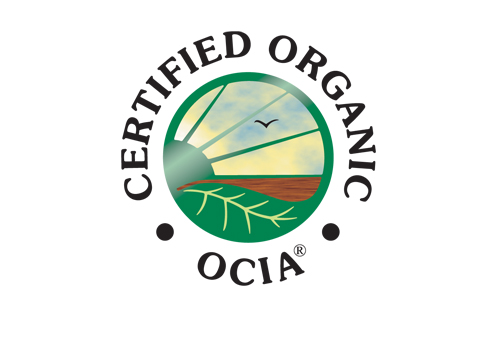

OCIA Coffee Production Standards

OCIA certification arises from the following basic principles: Organic certification is a system of institutionalized trust, allowing consumers to identify and reward conscientious stewards of our natural heritage. Organic certification is a privilege to be earned rather than a right to be withdrawn. No one knows the farm system better than a farmer. Organic production focuses on natural processes and their management: materials and products are an adjunct to, not a replacement for, effective management. Diversity, interaction, adaptability and competition are characteristic, natural elements to be respected in the organic system. The organic farming system should be structured and managed to ensure that soil loss through erosion and other degradation does not exceed natural replacement rates. Organic operations must take measures to maintain and/or improve landscape and enhance biodiversity.The producers, handlers, and consumers depend on processors of organic products to preserve or enhance the original nutritive value for the type of product, while continuing producer efforts to minimize contamination of the product and the environment. The audit trail is an integral part of organic certification. The use of products made from organisms that have been modified by genetic engineering techniques (as defined in the Materials List) is prohibited and is in direct violation of the philosophy and organic intent of OCIA. Nanotechology applied as an extension to the process of genetic modification referred to in 1.2.10 is prohibited within the organic system.The use of manufactured nanoparticles or nanostructures is prohibited. *Notwithstanding the above, the use of naturally occurring nanoparticles, as in traditional biodynamic practice, is allowed. The use of artificial nanoscale processes is prohibited within the organic system.
Applied Standards
An organic production and management plan for the coffee plantation must be developed. It must address, but is not limited to, plans for soil building and conservation, shade management, reforestation and/or restoration, crop protection (weed, insect, and disease management), vegetation management (including shade, if any), and means for compliance with OCIA International Standards. Coffee germplasm must include those varieties that are well adapted to regional or local conditions. Varieties are preferred with tolerance or resistance to pests and diseases. Tolerance or resistant traits must not come from the use of genetically engineered technology. As part of the organic management, reforestation and/or restoration plans must be developed to maintain sustainability of the coffee ecosystem. Any source of germplasm must be handled according to Section 2.8.3. These sources include, but are not limited to, seeds, transplants, and plantings from nurseries. Buffer zones must be established in those areas where it is necessary to reduce the impact or contamination potential from adjacent areas. Live barriers of trees and/or shrubs shall be maintained along roadways and sources of contamination. Buffer zones shall be established in accordance with Section 2.4. The harvest of the plantings in the buffer zones and the disposition of the buffer crop must be performed and documented separately from the certified organic crop. a. A soil building and conservation plan must be developed to maintain at least minimum conditions for crop growth in a sustainable environment. Soil conservation and management must be focused on developing strategies to promote soil building, prevent erosion and conserve hydrographic basins. Strategies allowed include, but are not limited to: 1. Contour planting. 2. Windbreaks, individual terraces, and live barriers. 3. Cover vegetation and cover crops. 4. Selective weeding in the coffee plantation. 5. Other means adapted to regional or local conditions. Soil building strategies must be designed to maintain or improve organic matter content and nutrient availability to the coffee plant. The following management techniques are allowed: 1. Use of on-farm resources such as composted material from coffee pulp, animal manure, untreated wood ashes and vegetation residues. 2. Application of composted materials, as described in Section 9.3. 3. Use of natural fermented compounds, such as homemade bocashi. 4. Use of microbial products, as provided in Section 9.3. 5. Use of leguminous vegetation as green manure or as part of the coffee vegetation ecosystem. 6. Use of Guano, purines, fermented and commercial organic fertilizers, as defined in Section 9.3 and the OMRI/OCIA List. 7. Other soil building practices, as defined in Sections 2.8.1, 2.8.2, 2.8.4, 2.9.1, and 9.3
After the harvest of the ripe cherries, any green or black cherries must be removed as much as possible from the field to prevent coffee borer encroachment. De-pulping must be performed, with a manual, mechanical, or industrial de-pulper, the same day of harvest.
Clean water must be used. Water testing shall be performed according to Section 5.1.4, only if justifiable reasoning exists that contamination from organic pesticides, inorganic fertilizers, and other contaminants is present.Fermentation performed during wet milling must be natural and use vats appropriate to this purpose. Fermentation is prohibited in plastic bags or wood-treated baskets. Chemical or synthetic products are prohibited for inducing fermentation. Drying areas must be maintained clean of any potential source of contamination, such as humans, birds, dogs, cats, etc. Storage of parchment and green coffee must be performed in a dedicated facility that preserves organic integrity, as defined in Section 6. No off-farm inputs may be stored with the organic crop. Packaging and bagging must be performed using food-grade materials and be dedicated only for organic coffee. Use of plastic material is restricted to polyethylene, polypropylene and other described in Section 5.5. As part of the audit control system and farm plan, coffee farm operations must maintain complete records from the cherry coffee harvest phase through the parchment phase and green coffee phase. These records must document segregation and disposition of the crop, use a lot numbering system, and be traceable and verifiable to the fields of origin. Wet mills, machinery, and other devices used must be maintained with appropriate sanitary and hygienic conditions. Parchment coffee must not be washed in streamlets or any other source of water that does not protect the product from contamination. Harvest and wet milling drainage water and wastes must be treated before they are channeled to creeks, rivers, or farm streams. Oxidation and/or drainage tanks must be used to filter wastewater to remove residues. In an effort to preserve the hydrologic sources in the coffee culture, alteration of the course of streams and other surface waters is prohibited in the wet milling process. By-products such as coffee pulp and parchment must be recycled and transformed into usable matter. As part of the waste management, means must be provided to compost and otherwise handle residues from wet and dry milling. Any mill that jeopardizes any water source, forest resources or any other element of biological or environmental importance shall not be certified. The quantity of water used in the wet milling process shall be reduced to the minimum possible so that wet milling is not a focus of contamination in the surrounding media. a. A plan to handle the presence of weeds, insects, and diseases must be developed as part of the production and organic management plan. Acceptable crop protection strategies designed to provide adequate weed, insect, and disease management include, but are not limited to: Selective pruning, but only as part of coffee restoration. Shade management as described in Section 4.9.7. Use of mulch. Use of variety selection. Use of entomopathogens. Use of parasitic wasps and other natural predators. Use of any other cultural practice adopted locally or regionally that does not include the use of prohibited synthetic materials or genetically modified organisms. Other strategies as described in Sections 2.10 and 9.3. As part of the biological diversity in coffee plantations, epiphytic plants such as Bromeliads, vines and parasitic plants are allowed to grow only on canopy trees that are above 10 meters in height. Only hand tools are allowed to provide removal and control of any epiphytic or parasitic growth found on coffee trees." "A shade management plan that takes into account ecological conditions, the production system, and sustainability must be developed to maintain optimum ecological conditions and enhance biodiversity. A diversity of tree species is encouraged when the soil and climatic conditions allow it. The management system must attempt to establish and maintain conditions for both organic crop production and habitat for indigenous animals. Hunting and fishing shall be prohibited within the coffee culture. The coffee culture system must support populations of migratory and domestic birds that are common to the natural, non-agricultural parcels of forested land of the region or country.
